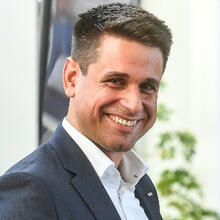
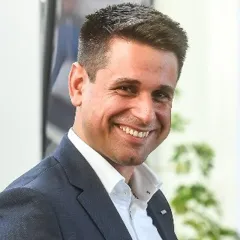
Biography:
Benjamin Abert is currently Head of Consulting and Service at FVA GmbH. In this role, Benjamin supports customers in using the FVA Workbench, prioritizes customer requirements, and passes the requirements on to software development for implementation.
Benjamin started his career at FVA GmbH as a Calculation Engineer for plain and rolling bearings with a Master of Science degree from the Technical University of Clausthal. Academically, Benjamin worked on the simulation of hydrodynamic contacts.
Title: REXS – The Standardized Interface for the Simple Exchange of Gearbox Data
Abstract:
Many modern transmission development tasks are digitized using simulation tools, which leads to building models in various tools across many development stages. These models all have in common that they operate with the same data, such as the number of teeth, center distance, etc.
The individual simulations' optimization must also be considered in the other simulation models, resulting in an enormous effort to synchronize model data. The time spent on data transfer increases with the number of tools used and risks data transfer errors or running simulations with outdated data.
The Reusable Engineering EXchange Standard (REXS), a parametric data model that enables all involved tools to export and read transmission model data, offers a solution to this problem. Eliminating the model structure of the individual tools prevents mistakes during data transfer and simplifies model management.
REXS is developed and maintained by the Research Association for Drive Technology under an open-source license.
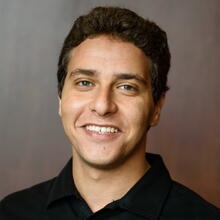

Biography:
Abdelrahman Amin joined the Mechanical Engineering Department as a Ph.D. student and a Graduate Research Assistant in January 2020. He received his B.Sc. from the American University in Cairo (AUC) in 2014.
Abdelrahman then spent the next three years working as a Design Release Engineer at General Motors, Egypt. He joined the Automotive Engineering Department at Clemson University in 2017, where he received his M.Sc. in 2019 with a focus on vehicle dynamics and noise, vibration, and harshness.
His Ph.D. research is directed towards vibration-based condition monitoring in the wind turbine gearbox.
Title: Vibration-Based Fault Detection in Wind Turbine Gearbox
Abstract:
A significantly increased production of wind energy offers a path to achieve the goals of green energy policies in the United States and other countries. However, failures in wind turbines, specifically their gearboxes, are higher due to their operation in unpredictable wind conditions resulting in downtime and losses. Improved and early detection of faults in wind turbines will significantly increase their reliability and commercial feasibility. Because of their powerful feature learning capacity, data-driven fault diagnosis techniques based on deep learning have recently gained increased attention. However, one of the critical challenges is performing this diagnosis on wind turbines that inherently run under time-varying operating conditions. Other signal components that are not of interest and high noise levels mask the signal components or signature generated by incipient damage. This presentation proposes a deep learning-based fault diagnosis method based on bivariate cyclic spectral coherence and cartogram images to improve the recognition performance of wind turbine gearbox faults. Thus, these two types of 2D map representations are used to train convolutional neural networks.


Biography:
Stefan HAUPTMANN graduated from the University of Stuttgart in 2006 with a degree in Aerospace Engineering. During his diploma thesis, Stefan developed the coupling of the wind energy aerodynamics module AeroDyn to Simpack.
Afterward, Stefan did research for another six years at the University of Stuttgart in the field of aeroelasticity of wind turbines, also using the software Simpack. In 2013, he joined MesH Engineering GmbH, where he leads the Wind Energy department, solving tasks for various customers in structural dynamics, aerodynamics, and the aeroelasticity of wind turbines and their drive trains.
Title: A Simpack-Based Digital Twin of Wind Turbine Drivetrains and its Applications
Abstract:
Since the beginning of 2021, the e-Twins joint project, which is co-funded by the German government, has been researching the benefits of holistic digital twin technology for the energy system. The energy system is considered at different levels: Grid level, plant level, system level, and component level. For these studied levels, different approaches have been developed to digitally represent the corresponding physical assets in a series of scenarios. These digital twins can be based on analytical approaches or reduced-order models (ROM) using machine learning methods.
As part of the energy system at the component level, wind turbine drivetrains are also described as digital twins. In addition to the methods described above, multibody systems can also be used to develop such a digital twin. This can be used as a virtual sensor to provide insight into the internal state of the powertrain, but its use within model predictive control will also be discussed.
The presentation will cover the various ways to develop a digital twin, focusing on wind turbine drivetrains and the realized representation through a multibody system model. The digital twin will then be shown in a multi-level scenario that also includes a newly developed software platform for visualizing the current state of the power system.


Biography:
Gregor Höpfner, M.Sc., started in 2012 as a student at RWTH Aachen University.
After completing his Master's Degree program "Development and Construction" in 2018, Gregor started to work in February of the same year as a Research Assistant in the Department of Systems Engineering — Modelling and Simulation. Since 2020 Gregor is now the Team Leader of the department group System Modelling.
In his research, Gregor deals with developing a seamless, function-oriented product development process for mechatronic systems. He focuses on integrating complex simulation models and methods into functional system models to allow early-stage design verification, using Model-Based Systems Engineering methods on parameter level. For this purpose, Gregor develops structured model libraries linking the Systems Modeling Language SysML with simulation tools and models automated simulation processes within these libraries.
Title: Towards Linking Multi-Body Simulation and Model-Based Systems Engineering: Automated Parameter Updating and Model Structuring using Simpack and Cameo Systems Modeler/SysML
Abstract:
Reduced time to market, rising system complexity and costly test procedures increase the need for virtual testing upfront validation. Therefore, complex systems are described in various models. Creating such models and keeping data consistent is effortful. Model-Based Systems Engineering (MBSE) is a method to manage system complexity and information by linking data in product development from requirements to the models that describe the solution space of a system. MBSE system models describe a system in a formal language, e.g., SysML. Simulation models can be (semi-)automatically integrated into SysML to test requirement fulfillment. We show an approach on how to link SysML system models in Cameo Systems Modeler with Multi-Body Simulation (MBS) models in Simpack using the example of a Wind Turbine. A SysML model is presented describing the Wind Turbine. An MBS model is linked to this SysML model, and it is demonstrated how parameters in MBS are automatically updated from the SysML. Additional models from other tools are integrated, creating executable virtual testing workflows making virtual testing repeatable. Thereby, modeling effort is reduced, and data consistency is ensured.
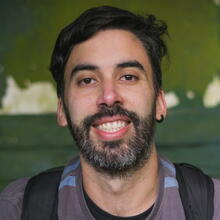
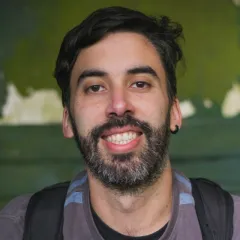
Biography:
Eladio Hurtado is a final year Ph.D. student of the Department of Mechanical Engineering at the University of Sheffield. In his research project, Eladio looks at wear mechanisms on wind turbine pitch bearings using a mixed approach of experimental and modeling methods.
Before starting his Ph.D., Eladio worked for eight years as a mechanical engineer, performing finite element analysis for a wide variety of industrial applications.
Title: Effect of Supporting Structure Flexibility on the Load Distribution of a Wind Turbine Pitch Bearing
Abstract:
Pitch bearing connects the blades to the hub, allowing the rotation of the blades to control the loads and power in wind turbines. These bearings are affected by different damage modes such as edge loading, core crushing, rotational wear, false Brinelling, and fretting corrosion. One of the relevant factors related to these damage modes is the load distribution among the rolling elements.
Uneven load distribution is a common feature of pitch bearings, as they are mounted on highly flexible structures (hub and blades). The effect of the bearing’s supporting structures on the load distribution has been largely studied; yet little evidence exists on the impact that modifying the flexibility of these components has on the bearing load distribution.
This work presents a load distribution analysis for a 2-meter diameter ball bearing using a finite element model of the assembly between the bearings, the blades, and the hub. Different assembly stiffness configurations are defined and compared by defining indexes to quantify the uniformity of the load distribution. It is concluded that increasing the radial stiffness of the hub produces the best results to effectively improve the load distribution among the rolling elements, resulting in the maximum contact load reduced by 20% for the studied bearing.

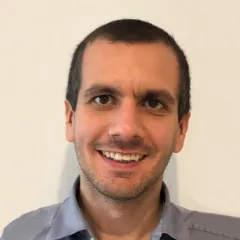
Biography:
Dan ILEA is an Industry Process Consultant Senior Manager with Dassault Systèmes, working in the SIMULIA Electromagnetics group. He has received his Ph.D. in the design and optimization of electrical machines from the Ecole Centrale de Lille, France, in 2011. Dan has since worked in various positions as part of the applications team for the finite element electromagnetic software Opera FEA.
Dan is continuously working with technology customers and partners to create and enable new workflows responding to the need for integrated modeling and simulation processes.
Title: Considerations for Accurate Calculation of Electromagnetic Forces in Electric Generators
Abstract:
The effects due to the electromagnetic forces and torques in an electrical generator are important considerations during the design stage of a wind turbine. The large diameters of such generators, coupled with the ever-smaller cross-section of airgap between the stationary and rotating parts of the generator, means that the interactions between the electromagnetic fields and the rest of the drivetrain need to be very well understood to avoid unexpected behaviors.
The harmonic content of these electromagnetic forces is the main cause of vibration and noise produced by the electrical generator. These forces, however, are further coupled with forces external to the generator, propagated through the drivetrain, leading to coupled effects, for which in-depth multi-physics simulation is required.
The Finite Element method is best suited for the simulation and characterization of these electric generators. However, accurate calculation of the electromagnetic forces can be challenging due to the derivations required in the magnetic field solution. The mesh topology and refinement will play a role in the precision with which these forces can be computed. Even so, the potential for numerical effects introduced by the mesh discretization can reduce the precision with which these forces are calculated.
In this presentation, we will look at the electromagnetic offering from SIMULIA and the specific capabilities that allow the accurate calculation of electromagnetic fields and forces inside electric generators. We will then look at the techniques we have implemented in order to remove the numerical effects due to the discretization when calculating electromagnetic forces for use in a multi-physics analysis.


Biography:
Per LINDSTRÖM LUSSI, is a Sámi Mariner (Marine & Welding Engineer) graduated with a Ph.D. in Production Technology (2015) from University West in Trollhättan, Sweden; a Licentiate of Naval Architecture and Ocean Engineering (2005) from Chalmers University and a B.Sc. in Marine Engineering (1991) from Linnaeus University.
Since his completed active sea service as Chief Engineer Officer in the Swedish Merchant Navy, Per Lindström has concentrated his professional career on specialty welding operations in the field of marine structures, nuclear reactors, boilers, and pressurized equipment. Since March 1, 2017, he has been a Senior Lecturer in Marine Technology at Linnaeus University.
Per Lindström is steering committee member of Linnaeus Knowledge Environment: Advanced materials; chairman of the Swedish Welding Commission's workgroup AG41 'Welding metallurgy and Fracture avoidance'; and since 2005, Sweden's delegate to the IIW working unit C -X 'Structural performances of welded joints — Fracture avoidance'.
Title: Fossil Free High Strength Steel Wind Turbine Blades — Concept Feasibility Study
Abstract:
There is a need for environmentally friendly and recyclable light-weight wind turbine blades. Light-weight wind turbine blades are currently constructed in Glass Fiber-reinforced Plastics (GRP), and Carbon Fibre reinforced Plastic (CRP) composite materials. Combinations that don’t decompose into nontoxic organic materials and/or minerals during the foreseeable future when buried, therefore, creating a substantial negative impact on the environment.
In Europe, by 2023, ca. 14 000 wind turbine blades from first-generation wind turbine farms will be decommissioned. Due to financial aspects, the recycling of GRP and CRP are believed to be performed by the large landfills. With increasing wind power farms, the number of GRP and CRP wind turbine blade landfills will also increase.
Therefore, Linnaeus University Welding Mechanics Laboratory, LNU WML, in Växjö, Sweden, is performing a feasibility study of a novel fossil-free high strength steel wind turbine blade concept. This study explores the possibilities of SSAB Strenx and SANDVIK steel grades by the well-established scientific engineering method ‘Systems Engineering’ and the Dassault Systèmes Finite Element Analyses (FEA) solver Abaqus in combination with its optimization software Tosca.
All in all, for the sake of manufacturing wind turbine blades by:
I. Recyclable material
II. Reduced cost by about 50% compared to GRP and/or CRP
III. Less negative environmental impact compared to GRP and/or CRP
Preliminary results indicate more than 10% blade weight reduction by using Swedish fossil free high strength steel instead of GRP and/or CRP.
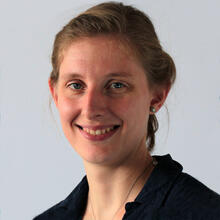
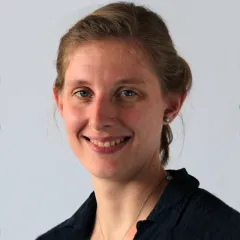
Biography:
Fiona LÜDECKE is an engineer for renewable energy systems and is currently working as a researcher at the Stuttgart Wind Energy Department of the University of Stuttgart.
With her Ph.D. research, she focuses on electro-mechanical interactions in wind turbines using Simpack.
Furthermore, Fiona works on the WINSENT project. The project aims to build two research wind turbines in the complex terrain of the Swabian Alps, where Fiona is responsible for the set-up and validation of the models of the turbines in FAST and Simpack.
Title: Using Simpack User Routines for Electro-Mechanical Co-Simulations
Abstract:
The nominal power of newly installed wind turbines increases steadily in wind energy.
Current publicly known industry developments are aiming for 14 MW. Such concepts are intended for offshore applications, where any component with intense maintenance needs must be avoided. Therefore, most of these concepts use direct-drive configurations. Direct-drive generators with such nominal power are huge, leading to heavy assemblies.
Research now investigates the mass reduction potentials by reducing passive material in generators. This may lead to changes in structural behaviour and system stiffness.
In standard generator constructions, the generators from a wind turbine perspective are assumed to be rigid assemblies with no rotor eccentricity. Therefore, the influences of the electromagnetic field on other turbine components are neglected. This assumption needs to be cross-checked for the ongoing research. This can only be achieved with strongly coupled co-simulation of the electromagnetic field and the mechanical system.
Therefore, this presentation introduces a newly developed software coupling of Simpack and COMSOL Multiphysics using the Simpack User Routines.
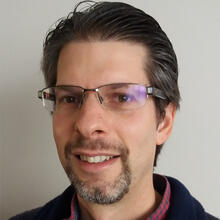

Biography:
Benjamin Marrant graduated as an aerospace engineer at Delft University of Technology in 2001. He worked as an associate researcher at Delft University of Technology in research projects related to the aeroelasticity of wind turbines until 2007. After that, Ben started in the Technology Division of Hansen Transmission, which ZF later acquired. In this division, he mainly worked in the area of NVH of multi-megawatt wind turbine gearboxes and drivetrains.
Title: An Automated Simulation Approach of Drivetrains towards Tonality Free Wind Turbines
Abstract:
As onshore wind turbines are installed closer and closer to urbanized areas, wind turbine OEMs are being faced with increasingly stringent noise regulations. Compliance with these noise regulations, combined with torque density increase measures, increasing power levels of onshore wind turbines, and shorter design cycles translate into ever-increasing design challenges for gearbox suppliers. As the major design levers with respect to NVH are being decided upon in the concept phase where not all design inputs are fixed it is key to be able to compare different concepts, gear designs, etc., and the interaction with the system level in a quick and easy way. This requires an all-in-one simulation approach, involving a.o. transfer path predictions with Simpack, which is able to predict the NVH risks for the different design options available. Therefore, ZF developed an integrated simulation platform that combines the different aspects of predicting wind turbine tonality. This enables ZF to develop NVH risk mitigation strategies pro-actively in an early phase of the design leading to less expensive and better integrated solutions.
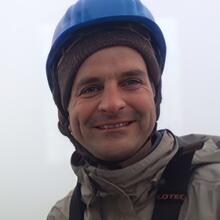
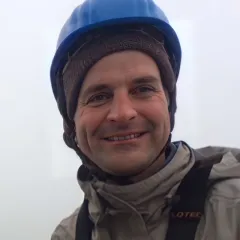
Steve MULSKI is a SIMULIA Industry Process Expert - Wind Energy Executive at Dassault Systèmes. Steve holds a Master of Science in Design and Manufacture. Previously he worked for SIMPACK as Hard of Sales and Marketing and Head of Wind Energy Solutions. Simpack was acquired by Dassault Systèmes in 2014.
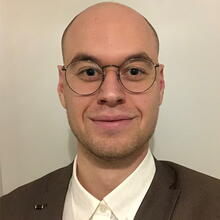
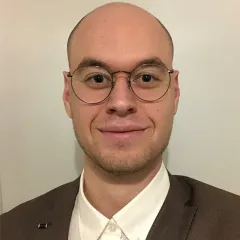
Biography:
Louis Pierre Tepper, born in Heilbronn, Germany, has already been since his childhood passionate about technology.
After graduating from high school in Stuttgart, he started studying Mechanical Engineering at the University of Stuttgart. Between his bachelor's and master's studies, Louis completed an internship at BMW in Madrid in electric mobility and hybrid models.
In his master's program, which is currently underway, he specialized in electrical machines and drives and control engineering. Since the field of renewable energies fascinated him during his studies, he is currently writing his master's thesis at the Stuttgart Chair of Wind Energy on this topic: Feasibility Study for Joint Mooring of Floating Offshore Wind Turbines.
Title: Feasibility Study of Shared Mooring for Floating Offshore Wind Turbines
Abstract:
This paper aims to evaluate the feasibility of the new concept of shared mooring lines in order to achieve potential cost savings by reducing anchors and installation costs.
The whole model consisting of floater, turbine, and mooring line is created in Simpack, where the mooring line is represented by mass points that are connected to each other by parallel spring-damper force elements. The mooring lines are connected to a semisubmersible floater, supporting a 15 MW turbine. The aerodynamic and hydrodynamic forces for this Floating offshore wind turbine (FOWT) are computed by Aerodyn and Hydrodyn, interfaced with SIMPACK. This FOWT is simulated individually with different wind speeds and wave heights. We generate the forces on the mooring lines and the movement data of the turbines. In order to simulate a shared mooring line connecting both turbines, two simple floater models are added with the real data from the individual simulations as identically as possible, using force elements to integrate the aerodynamic and hydrodynamic forces as input functions. The forces on the shared mooring line can be compared with those of the single simulations, and a conclusion can be made.
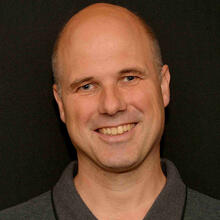

Biography:
Lars Pilgaard MIKKELSEN has for the last 10 years been an Associate Professor in the Department of Wind Energy at the Technical University of Denmark. His work includes both teaching and research in the field of wind turbine blade materials. The research work Lars has been conducting over the last decade focuses on understanding mechanisms controlling the manufacturing, mechanical properties, and failure of the load-carrying laminates inside the wind turbine blades. A topic involving the use of Abaqus together with user-defined subroutines and advanced characterization technics such as fatigue testing and 3D x-ray tomography. The tomography, together with an advanced segmentation algorithm, aims to achieve precise numerical representations of the actual composite materials used in wind turbine blades. Lars joined the SIMULIA Champion program in 2020.
Title: Modeling Composites aimed for Large Wind Turbine Blades
Abstract:
Large wind turbine blades rely on composite materials with excellent and predictable material performance. This presentation demonstrates different cases for modeling composites aiming at the wind turbine blade application. The demonstration will be given using the commercial finite element code Abaqus. The demonstration will cover the ability to model the actual fiber, bundle, and fabric architecture as well as the matrix material performance of specific composite samples. It will be demonstrated how a precise numerical representation of a full cross-section of a material test sample containing 100.000’s of fibers is translated from full 3D x-ray CT scans to high fidelity finite element models. Some of this work includes a Fortran-based implementation of user-defined user-element and user-materials, as well as material orientation mapping.
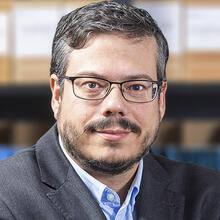
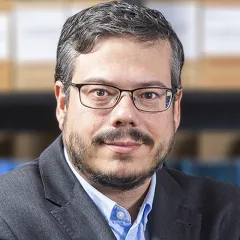
Biography:
Javier RODRIGUEZ has a Ph.D. in Civil Engineering and one degree in Mathematics. He joined the Spanish firm Principia in 2003, where he has worked in the numerical solution of many types of mechanical and structural problems. Javier is the Technical Manager of the company, analyzing the problem, the results obtained from the simulations, and the conclusions reached.
Title: Cracking Problems in Wind Turbines
Abstract:
By their very nature, wind turbines are subjected to many variable and cyclic loads, and, consequently, they are prone to experiencing fatigue cracking problems in various parts of the turbine. Examples include the aluminium rings (alurings) of the blades of several commercial wind turbines, the gears of the yaw control mechanism, and even the main rack supporting all the equipment.
Principia has used numerical simulation with Abaqus and fe-safe to study the origin of many of those cracks, determine their ability to propagate, and analyze the merits of various strategies proposed to solve existing problems or prevent their future occurrence. Among the technologies involved, besides local stress and strain fatigue initiation criteria, are critical distance methods and crack representations based on the extended finite element method (XFEM) to assess the growth behavior.
The communication mainly concentrates on two of the cases studied: the alurings and the yaw drive gears. It describes the methodology used for analyzing the problem, the results obtained from the simulations, and the conclusions reached.
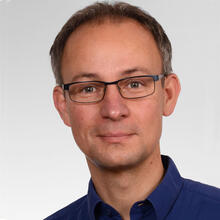
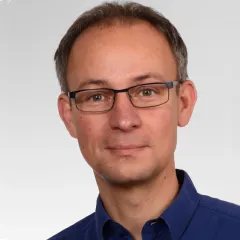
Biography:
Dr.-Ing. Thomas Rosenlöcher studied mechanical engineering at the Technische Universität Dresden, specializing in drive technology, graduating as a graduate engineer in December 2004. During his studies, Thomas worked for more than one and a half years at the BMW Group in Munich and Rosslyn in South Africa in the field of drive technology for motorbikes and motor vehicles.
After his diploma thesis, he became a research assistant at the Chair of Machine Elements. He worked there on the analysis of dynamic drivetrain behaviour for multi-megawatt drivetrains using the multibody system and the finite element method.
In June 2012, Thomas obtained his Ph.D. with the thesis on "Analysis of the Dynamic Drive Train Behaviour of Multi-Megawatt Drive Trains using the Multibody System and Finite Element Method." Since 2014, he has been a Chief Engineer at the Chair of Machine Elements, being involved in teaching and the research area of design and dimensioning of large drives with particular attention to system dynamics.
Title: Simulation of Loads in the Drive Train of Wind Turbines using Simpack
Abstract:
The extensive requirements for the reliable operation of wind turbines make the design and the dimensioning of wind turbine gearboxes an interdisciplinary challenge. In the meantime, the possibilities of the dynamic simulation are already in use in an early stage of the development process. The natural frequencies can be determined and compared to possible excitations through simulation models. The simulation of the operation of the wind turbine under different wind speeds allows the calculation of component loads as a basis for the further design process. The presentation concentrates on the challenges of dimensioning and the design of gearboxes for wind turbines and the associated dynamic properties of the complete system on the example of NREL's 5 MW reference wind turbine. The available simulation model is used to determine the influence of the model's level of detail on the resulting loads for the bearings and the occurring load distribution in the gearing of the first planetary gear stage. The available results offer improved possibilities to design drivetrain components and understand dynamic effects during the operation.
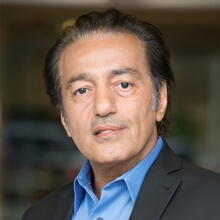
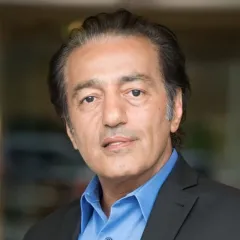
Biography:
Reza SADEGHI has over 20 years of experience in executive management, portfolio planning, R&D, mergers, and acquisitions. He has deep knowledge of both discrete and formulated industries. As chief strategy officer, Reza is responsible for BIOVIA’s portfolio and strategy at Dassault Systèmes, as well as BIOVIA’s contract research. After beginning his career in R&D for Aerospace and Defense, Reza moved on to an executive role at a Palo Alto startup (MARC Analysis Research Corporation) and later with MSC Software, both of which are developers of scientific software with a focus on physics-based modeling and simulation. As chief technology officer at MSC Software, Reza was responsible for product strategy and R&D. He is a regular speaker at several international life and material science events and holds a number of advisory board positions.
Reza lives in La Jolla, Ca. He retains an adjunct faculty status at UCSD and SDSU graduate schools of engineering.
Title: Generative Materials Design Leveraging AI and Materials Informatics
Abstract:
Materials Informatics plays a key role in accelerating data-driven materials and chemicals development and optimization. We combine smart materials data infrastructure and AI to accelerate the development of cutting-edge materials and formulations, facilitating design optimization and enabling its reuse.
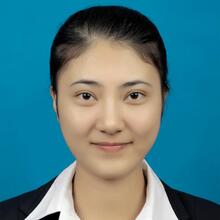
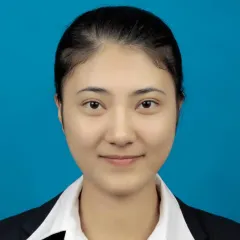
Biography:
Wang Shuang, 2nd Doctor of Chongqing University, is currently majoring in Mechanical Engineering at the College of Mechanical and Vehicle Engineering, Chongqing University.
Wang’s research targets the digital design of key components of large wind turbine units, including parametric pitch design, yaw bearing systems, and the dynamic analysis of drive chains.
Over the past two years, she has taken charge of precise dynamic modeling and structural vibration control of wind turbines.
Title: Dynamic Response and Structural Vibration Control of Offshore Wind Turbines Subjected to Multiple Excitations
Abstract:
In order to simulate the performance of wind turbines with high precision, an aero-hydro-elastic-control coupling simulation model of the offshore wind turbine under wind-wave-seismic excitations is established based on the multibody dynamics model, which includes blades, towers, and drivetrains. Using Simpack, the model is combined with the seismic excitation model, hydrodynamics, aerodynamics, and the pitch-torque control system.
Because of the wind shear effect and the output power fluctuation caused by the change of wind speed and the unknown disturbance of the system, a variable speed pitch control strategy based on active disturbance rejection is adopted to suppress the output power fluctuation.
The control model is established through MATLAB/Simulink, which can effectively suppress system vibration and reduce the imbalances of yaw and pitch moments.
In addition, the wind turbine dynamic model is then coupled with TMD system to carry out the response analysis of the wind turbine under wind-wave excitations with TMD control under multiple operating conditions.
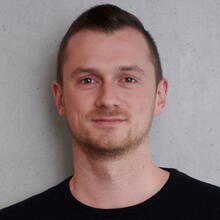
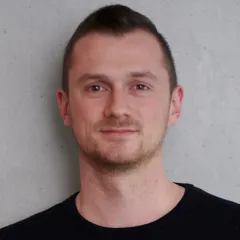
Biography:
Victor Stadler studied mechanical engineering at the University of Stuttgart, Germany, focusing on production and logistics, and obtained his master's degree in 2018.
Victor then worked as a consultant for digitization projects before joining Dassault in 2021 as an Industrial Process Consultant. Victor supports companies with technical questions about managing manufacturing tasks with the 3DExperience platform.
Title: From Engineering to Manufacturing
Abstract:
Next to the development of complex systems, also the manufacturing processes need to be well-planned and eventually executed. These steps imply a change from a product-centric to a process-centric view and come with various challenges. This session will point out critical capabilities for mastering production and logistics, highlighting the benefits of solutions that provide continuity between system development and manufacturing.
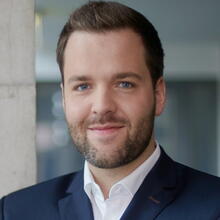

Biography:
Johannes UNGLERT earned his Ph.D. in Industrial Engineering for developing new approaches to support production engineers in the design and management of production and logistics systems. As a management consultant, Johannes continued following his interest in the digital transformation of factories & industry 4.0 before joining Dassault Systèmes as Industry Process Consultant in 2020. Throughout the years, Johannes supported manufacturing companies from various industries in improving their production & logistics operations.
Title: From Engineering to Manufacturing
Abstract:
Next to the development of complex systems, also the manufacturing processes need to be well-planned and eventually executed. These steps imply a change from a product-centric to a process-centric view and come with various challenges. This session will point out critical capabilities for mastering production and logistics, highlighting the benefits of solutions that provide continuity between system development and manufacturing.